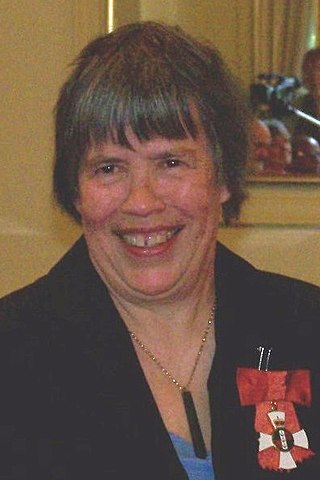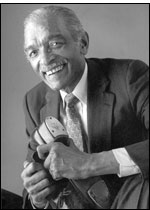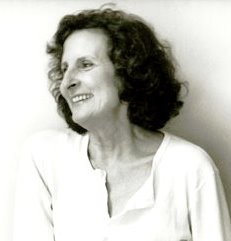
Ruth Jones Wakefield was an American chef, known for her innovations in the baking field. She pioneered the first chocolate chip cookie recipe, an invention many people incorrectly assume was a mistake. Her new dessert, supposedly conceived of as she returned from a vacation in Egypt, is the inspiration behind the massively popular Toll House Chocolate Chip Cookie. Throughout her life, Wakefield found occupation as a dietitian, educator, business owner, and published author. She wrote a cookbook titled Ruth Wakefield’s, Toll House: Tried and True Recipes.

Dame Gillian Karawe Whitehead is a New Zealand composer. She is of Māori Ngāi Te Rangi descent. Her Māori heritage has been an important influence on her composing.
Jennifer Tipton is an American lighting designer. She has designed for dance, theater, and opera. She is known for working on many productions of American Ballet Theatre.

Charles "Honi" Coles was an American actor and tap dancer, who was inducted posthumously into the American Tap Dance Hall of Fame in 2003. He had a distinctive personal style that required technical precision, high-speed tapping, and a close-to-the-floor style where "the legs and feet did the work". Coles was also half of the professional tap dancing duo Coles and Atkins, whose specialty was performing with elegant style through various tap steps such as "swing dance", "over the top", "bebop", "buck and wing", and "slow drag".

Trisha Brown was an American choreographer and dancer, and one of the founders of the Judson Dance Theater and the postmodern dance movement. Brown’s dance/movement method, with which she and her dancers train their bodies, remains pervasively impactful within international postmodern dance.

Jane Jarvis was an American jazz pianist. She was also known for her work as a composer, baseball stadium organist and music industry executive.
Amy Arbus is an American photographer. She teaches portraiture at the International Center of Photography, Anderson Ranch, NORD photography and the Fine Arts Work Center. She has published several books of photography, including The Fourth Wall which The New Yorker called her "masterpiece". Her work has appeared in over 100 periodicals including The New Yorker, Vanity Fair, Rolling Stone, Architectural Digest, and The New York Times Magazine. She is the daughter of actor Allan Arbus and photographer Diane Arbus, the sister of writer and journalist Doon Arbus, and the niece of distinguished poet Howard Nemerov.
Deborah Jowitt is an American dance critic, author, and choreographer. Her career in dance began as a performer and choreographer. Jowitt has received several awards for her work, including a Bessie for her work in dance criticism.

Judith Ann Jamison is an American dancer and choreographer. She is the artistic director emerita of Alvin Ailey American Dance Theater.
Dixon Place is a theater organization in New York City dedicated to the development of works-in-progress from a broad range of performers and artists. It exists to serve the creative needs of artists—emerging, mid-career and established—who are creating new work in theater, dance, music, literature, puppetry, performance, variety and visual arts.
Danspace Project is a performance venue for contemporary dance. Its performances are held in St. Mark's Church in the East Village area of the Manhattan borough of New York City.
Ernest "Brownie" Brown was an African American tap dancer and last surviving member of the Original Copasetics. He was the dance partner of Charles "Cookie" Cook, with whom he performed from the days of vaudeville into the 1960s, and of Reginald McLaughlin, also known as "Reggio the Hoofer," from 1996 until Brown's death in 2009.
Charles “Cookie” Cook was a tap dancer who performed in the heyday of tap through the 1980s, and was a founding member of the Copasetics. He was the dance partner of Ernest “Brownie” Brown, with whom he performed from the days of vaudeville into the 1960s. They performed in film, such as Dorothy Dandridge 1942 “soundie” Cow Cow Boogie, on Broadway in the 1948 musical Kiss Me, Kate, twice at the Newport Jazz Festival, as well in other acts, including “Garbage and His Two Cans” in which they played the garbage cans. He headlined venues including New York's Palace, the Apollo, Radio City Music Hall, Cotton Club, and London Palladium. Quoted as saying “if you can walk, you can dance,” Cook was one of the most influential tap masters and crucial in passing on the tap tradition to future generations.

Mable Lee, sometimes spelled Mabel Lee, was an American jazz tap dancer, singer, and entertainer. Lee appeared on Broadway, at the Apollo Theater, and was known as "Queen of the Soundies" due to her numerous performances in the films.
Peggy Spina Tap Company is a tap dance company that first presented in 1981 at Cami Hall by its founder and artistic director, Peggy Spina. The company performs annually with the Joel Forrester Jazz Quartet in the Spina SoHo Loft on Prince Street in New York City. Her choreography in the 1980s was described by The New York Times as "particularly fascinating", including "excited outbursts and changes of rhythm as if Miss Spina were a conversationalist with her feet who had suddenly thought of new ideas", although the same review described her as "less convincing as a choreographer for ensembles." Reviews of the company performances and choreography in the 1990s indicated "the interplay of tap rhythms...was like sophisticated repartee." Her company signature pieces include, "Stop the Music," known for "the tightness of the taps and the relentless locomotive surge of Ms. Spina's choreography and Mr. Forrester's score".

Blondell Cummings was an American modern dancer and choreographer. She is known for her experimental choreography and was a fixture in the New York and Harlem dance scene for decades.
Tony Carl Waag is a tap dancer, director and producer living in New York City. In 2008, he was dubbed "The Mayor of Tap City" by TheaterMania. He is currently the Executive/Artistic Director of the American Tap Dance Foundation.
Virginia Maksymowicz is an American artist whose sculptural installations incorporate a variety of media. She lives in Philadelphia, PA and is married to artist-photographer, Blaise Tobia.
CETA Artists Project (1977–1980) in New York City employed approximately 500 accomplished but underemployed artists in five programs, the largest of which was the Cultural Council Foundation (CCF) Artists Project. The project was funded under the Comprehensive Employment and Training Act (CETA) (1974–80) when more than 10,000 artists – visual, performing, and literary – were employed nationally. This was the largest number of artists supported by Federal funding since the Works Progress Administration of the 1930s.
Harriet "Quicksand" Browne was an American tap dancer, educator and choreographer who was best known for her innovation in sanding. Browne got a job dancing in the chorus but shortly afterwards got pregnant and had a son, which put a temporary stop to her dancing career. After the birth of her son, she resumed dancing as a soloist and as a member of the chorus in clubs around Chicago. During the 1950s, she toured with Cab Calloway's band. After she got a job in the chorus at a club in Greenwich Village, although she continued to tour, she settled in New York City.







